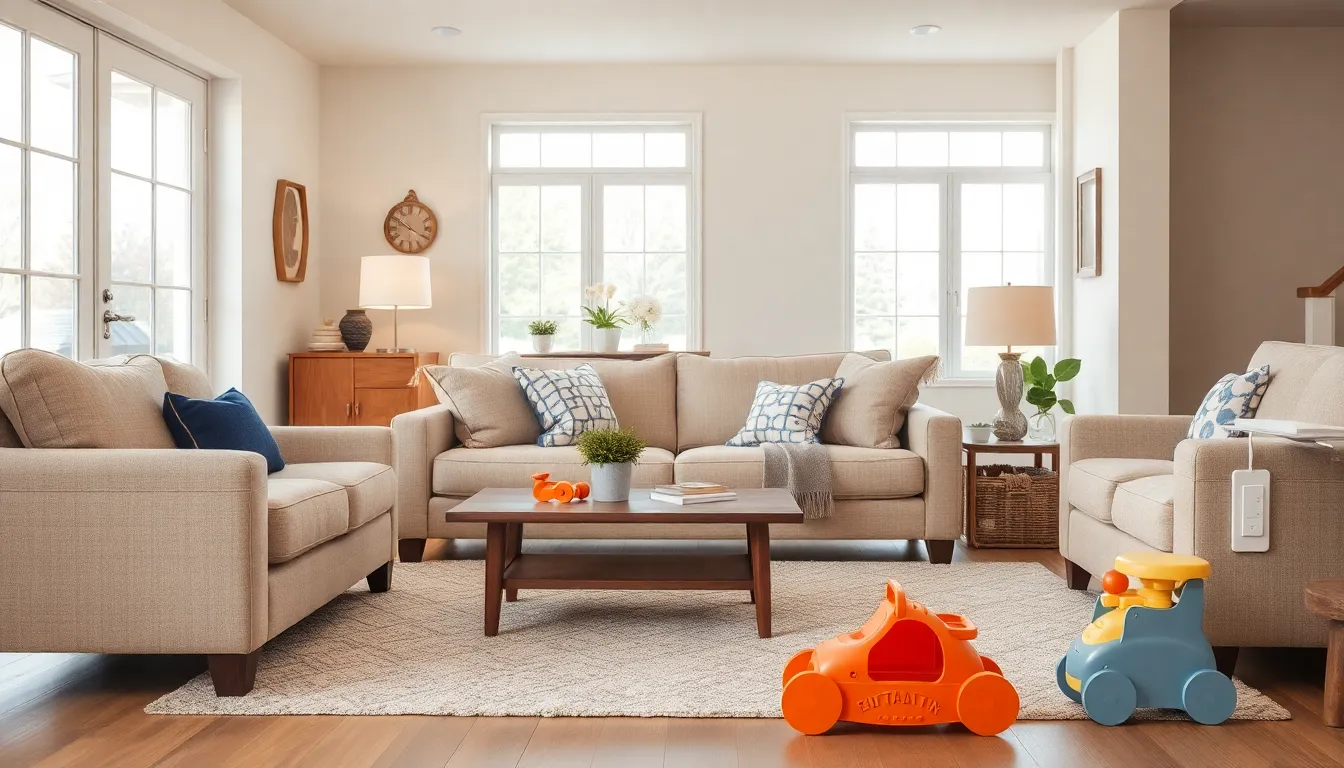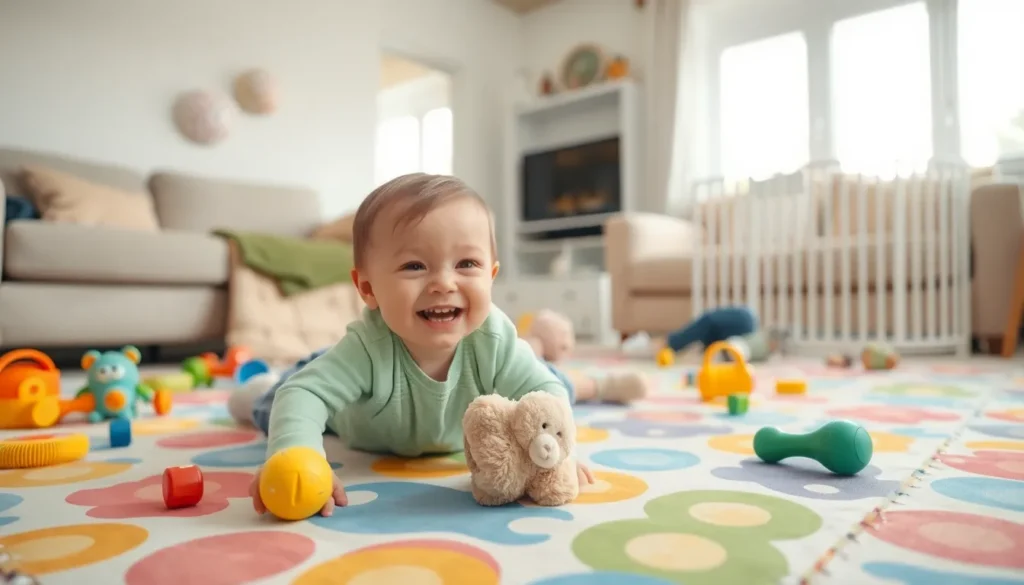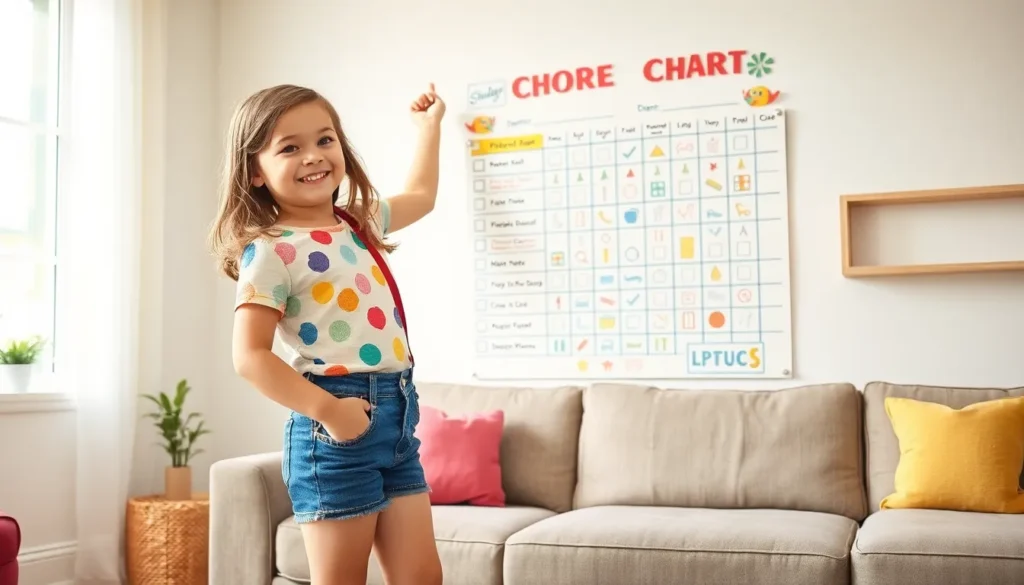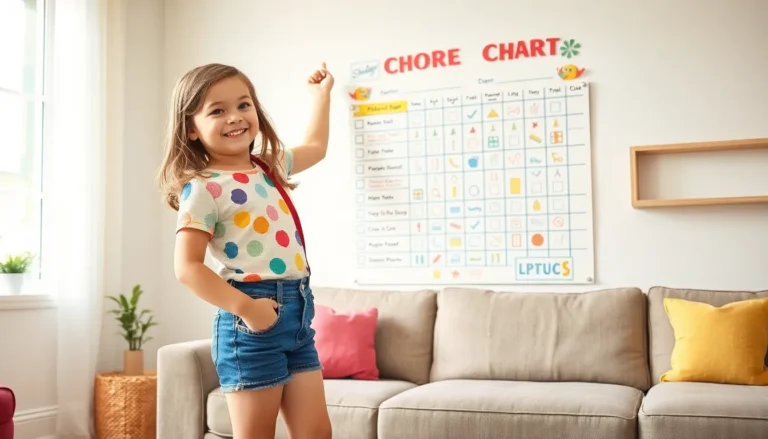Table of Contents
ToggleWhen little explorers start crawling and toddling, the home can quickly transform from a cozy haven into a mini jungle gym. Suddenly, the coffee table becomes a trampoline and the kitchen cabinets turn into treasure chests of potential hazards. It’s time to embrace the art of childproofing, a task that’s part safety strategy and part creative puzzle-solving.
Childproofing isn’t just about slapping on a few safety locks and calling it a day. It’s about turning your home into a fortress of fun—where kids can roam freely without turning into pint-sized daredevils. With a sprinkle of humor and a dash of practicality, this guide will help you navigate the wild world of childproofing, ensuring your home stays both safe and entertaining. After all, happy kids mean happy parents, and who wouldn’t want that?
Importance Of Childproofing Home
Creating a safe environment for children isn’t just a precaution; it’s a necessity. Home safety measures reduce the risk of injuries significantly. According to the American Academy of Pediatrics, nearly 2.5 million children visit emergency rooms for preventable injuries each year. This highlights the critical need for effective childproofing strategies.
Safety locks serve as one of the essential tools in childproofing. However, parents should consider additional measures. Secure furniture to walls and use safety gates at stairs to prevent falls. Installing corner guards on sharp furniture edges further enhances safety.
Effective childproofing means removing hazardous items within reach. Appliances, cleaning supplies, and small objects known for choking hazards require careful storage. Placing these items high up or in locked cabinets keeps children safe.
Maintaining an engaging environment plays an important role too. It helps keep children focused on safe activities rather than dangerous areas. Creating play zones with age-appropriate toys fosters exploration while minimizing risks.
Establishing clear boundaries contributes to safety. Teaching children where they can and cannot go sets expectations for behavior. Involving them in discussions about safety instills understanding and respect for rules.
Regular inspections pave the way for ongoing safety. As children grow and develop new skills, existing measures might need adjustments. Routinely evaluating childproofing efforts ensures continued effectiveness.
Childproofing is an evolving process that adapts to a child’s age and abilities. Implementing these strategies leads to an environment where children can enjoy their exploration safely.
Key Areas To Childproof

Childproofing a home requires attention to several vital areas. Focusing on specific rooms helps create a safer environment for children.
Living Room Safety
In the living room, secure heavy furniture like bookshelves and cabinets to walls to prevent tipping. Use corner bumpers to cushion sharp furniture edges. Keep small items like remote controls and toys out of reach, as these pose choking hazards. Consider using slipcovers to make furniture easier to clean and maintain. Additionally, block access to electrical outlets with safety covers to prevent shock.
Kitchen Precautions
Kitchen safety demands extra vigilance. Store sharp utensils and knives in high drawers or cabinets, avoiding easy access by children. Utilize stove guards to prevent kids from accidentally turning on burners. Keep cleaning supplies stored in locked cabinets, ensuring hazardous materials remain out of reach. In addition, use childproof latches on cabinets containing food, ensuring safety while avoiding mess.
Bathroom Considerations
Bathroom areas require careful attention, too. Install anti-slip mats in the tub to prevent falls during bathtime. Keep medications and toiletries secured in cabinets or drawers, reducing risks of accidental ingestion. Make sure to keep bathwater at safe temperatures to avoid burns. Additionally, consider toilet locks to prevent accidental drowning, especially with toddlers.
Bedroom Essentials
Bedroom safety focuses on creating a secure sleeping space. Anchor heavy furniture to walls to prevent tipping during play. Keep crib slats no further than 2.5 inches apart to ensure child safety. Use non-toxic paint and materials to provide a healthy environment. Consider nightlights to help children navigate during the night, reducing the chance of falls. Implement these strategies to ensure a safer sleeping environment for children.
Childproofing Products
A variety of products aid in effective childproofing, promoting safety in homes.
Gates And Barriers
Gates and barriers play a pivotal role in restricting access to potentially dangerous areas. Install safety gates at the tops and bottoms of staircases to prevent falls, with pressure-mounted gates suitable for doorways. Each gate should comply with safety standards to ensure reliability. Barriers could also secure off-limit spaces like kitchens or home offices, making them essential for establishing boundaries that keep children safe while they explore.
Safety Locks And Latches
Safety locks and latches protect cabinets and drawers, reducing access to hazardous items. Consider installing lockable latches on all low cabinets, especially those containing cleaning supplies or medications. Use sliding locks on drawers to keep sharp tools out of reach. An added layer of security can include magnetic locks, which require a key to open. Each of these solutions significantly decreases the risk of injury by limiting children’s access to dangerous materials.
Corner Protectors And Foam Padding
Corner protectors and foam padding serve as vital components in ensuring a soft landing for active children. Place corner guards on sharp furniture edges to minimize the chance of injuries during play. Additionally, covering hard surfaces with soft foam padding can cushion falls in play areas. For enhanced safety, consider using non-toxic materials that meet safety standards. Preemptively treating dangerous edges with these protectors promotes a safer environment for children as they navigate their surroundings.
Tips For Effective Childproofing
Effective childproofing requires ongoing attention and adaptability to ensure safety as children grow. Understanding specific areas for improvement helps maintain a secure environment.
Conducting A Safety Assessment
Start by examining each room. Identify potential hazards in living areas, kitchens, and bathrooms. Taking note of items within reach that can pose a risk, like small objects or sharp tools, ensures better safety management. Furniture stability plays a critical role, so secure heavy items to walls to prevent tipping. Regular assessments keep safety measures relevant, especially as children develop new skills. Involving caregivers in this process promotes a consistent approach to safety.
Engaging Children In Safety Practices
Involve children in safety discussions as soon as they can understand basic concepts. Encouraging them to identify safe and unsafe items fosters awareness. Create engaging activities around safety rules, like games or role-playing scenarios. Teaching children the importance of boundaries helps build respect for safety measures. Reinforce positive behavior with praise when they follow rules. Use age-appropriate language and examples relatable to their experiences. Open communication makes children feel empowered to speak up about potential dangers.
Creating a safe home for children is an ongoing journey that requires attention and adaptability. By implementing thoughtful childproofing strategies and regularly assessing safety measures, parents can foster an environment where kids can explore freely and safely. This proactive approach not only minimizes risks but also encourages children to develop an understanding of safety through open communication and involvement in the process. As children grow and their abilities change, staying vigilant and making necessary adjustments ensures that the home remains a secure haven for their adventures. Prioritizing safety today leads to happier and healthier tomorrows for both children and parents.







